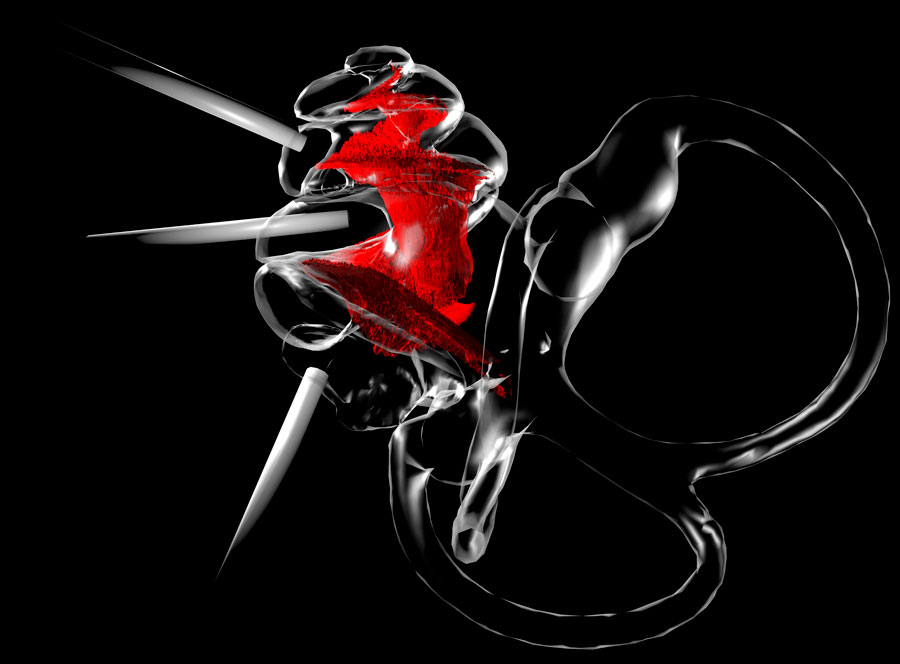Hearing the light: how artificial hearing could become more natural
Researchers at the University Medical Center Göttingen (UMG) and the German Primate Center – Leibniz Institute for Primate Research (DPZ) are demonstrating improved frequency resolution of artificial hearing using optical stimulation of the inner ear.

Reconstruction of the inner ear of a Mongolian gerbil, including cochlear and vestibular system. © Carlos Duque-Afonso, Institut für Auditorische Neurowissenschaften/umg
/UMG/DPZ/ In a recently published study, scientists led by Prof. Tobias Moser, head of the Institute for Auditory Neuroscience at the University Medical Center Göttingen (UMG) and the Auditory Neuroscience and Optogenetics research group at the German Primate Center – Leibniz Institute for Primate Research (DPZ), have characterized the spectral resolution of natural and artificial hearing. In Mongolian gerbils, they compared optogenetic excitation of the auditory nerve – a technique which was recently developed in Göttingen – with acoustic hearing and with clinically used electrical stimulation of the auditory nerve. To stimulate the auditory nerve optically, light-sensitive ion channels were introduced into the nerve cells of the inner ear using viral gene transfer. By studying neuronal activity in the midbrain, the spectral resolution of acoustic, optical and electrical hearing was compared. The results demonstrate that the artificial excitation of the auditory pathway by light allows a much higher spectral resolution than the excitation by electric current. At low levels of activity in the midbrain, the spectral resolution was even as good as that of acoustic hearing. These results spur hope that future optical cochlear implants will improve the ability of hearing impaired to hear more naturally, improve speech understanding in noise and music perception.
Original publication
Dieter A, Duque-Afonso CJ, Rankovic V, Jeschke M, Moser T (2019): Near physiological spectral selectivity of cochlear optogenetics. Nature Communications, (doi: 10.1038/s41467-019-09980-7)




